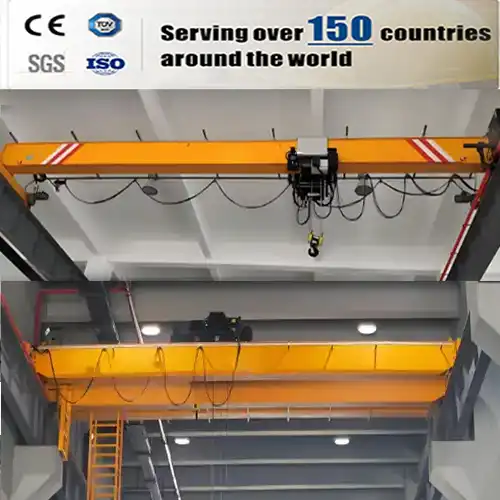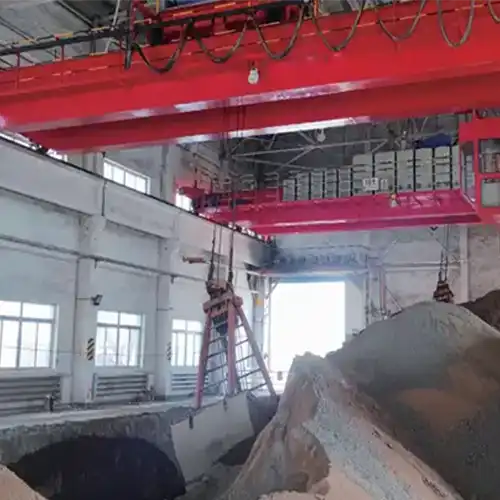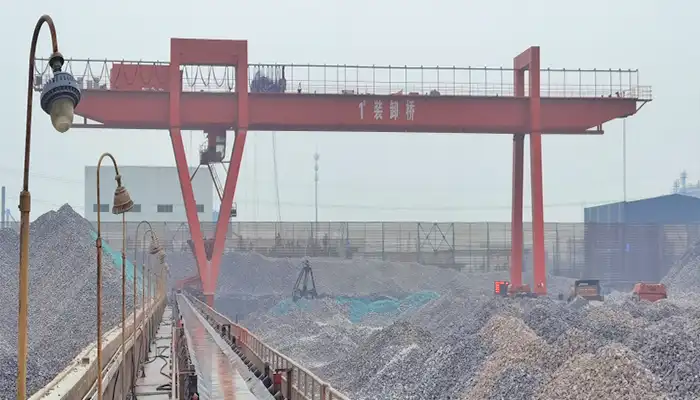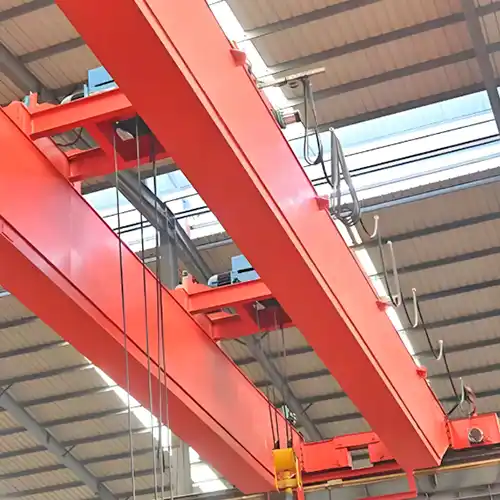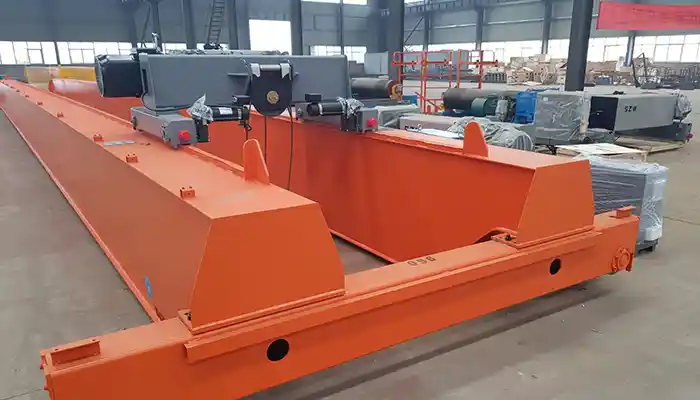
Battery Powred Portable Jib Crane Design for Improved Mobility
Battery-powered portable jib cranes enhance mobility with lightweight designs, allowing for easy maneuverability and efficient lifting in various workspaces.
Battery Powered 500kg Portable jib crane for sale, Customized Movable Jib Crane for High Flexibility
Battery-Powered Portable Jib Cranes
Battery-powered portable jib cranes are exactly what they sound like—compact, mobile cranes powered by rechargeable batteries. They're designed for tasks that require lifting heavy loads but without the hassle of plugging into an electrical source or relying on manual power. This makes them super flexible, especially in places where power outlets aren't easy to access. Think of them as a mini crane that goes wherever you need it, with the added benefit of being eco-friendly by running on batteries instead of fuel.
Now, why is mobility such a big deal for industrial cranes? Well, let's face it: in many industrial settings, things are constantly on the move. You might need to lift an engine block in one area and then transport equipment across the workshop floor. A mobile crane allows you to do that without the headache of setting up a stationary unit or dragging heavy machinery across the site. Plus, having a crane that's both portable and battery-powered means less downtime, less strain on workers, and more productivity.
Lately, the design of these cranes has shifted toward making them even easier to move and handle. Engineers are incorporating lighter materials, advanced wheel systems, and ergonomic controls. The goal is simple: make the crane as easy to maneuver as possible while still handling serious lifting tasks. These innovations are paving the way for cranes that are not just tools, but essential problem-solvers in industries that demand flexibility and efficiency.
Overview of Battery-Powered Portable Jib Cranes on Wheels
Battery-powered portable jib cranes or mobile jib cranes on wheels combine mobility, flexibility, and lifting power in one highly efficient system. These cranes are designed to move freely across industrial environments without the need for fixed power sources or manual labor. The battery-operated system eliminates cumbersome cords, allowing for easier maneuvering in tight spaces, while their portability on wheels makes them ideal for a variety of industries, from warehouses to construction sites.
Key Features:
- Mobility on Wheels: Equipped with swivel wheels, rubber tires, or omni-directional wheels, these cranes are designed for smooth and controlled movement, ensuring ease of transport across different surfaces and confined spaces.
- Battery-Powered Operation: Eliminating the need for external power sources, battery-powered cranes offer flexibility in both indoor and outdoor settings. The battery capacity typically allows for several hours of continuous operation, ideal for remote or off-grid environments.
- Lightweight and Durable Materials: Many models feature lightweight aluminum or composite materials, which make them easier to transport without compromising strength or durability.
- User-Friendly Controls: Wireless or remote operation systems provide ergonomic controls, allowing operators to safely manage the crane from a distance, reducing physical strain and increasing efficiency.
Typical Applications and Loads Handled by Battery-Powered Jib Cranes
These cranes are commonly used in industries such as automotive manufacturing, construction, and logistics, where the ability to move heavy loads quickly and safely is essential. Whether it's for lifting machinery in an assembly line or moving materials on a construction site, battery-powered portable jib cranes offer a versatile and efficient lifting solution
In short, battery-powered portable jib cranes on wheels are a game-changer for industries requiring both flexibility and lifting strength, helping businesses improve workflow and reduce downtime.
Typical Applications
Battery-powered jib cranes are versatile and can be used across various industries, including:
- Automotive Manufacturing: These cranes are ideal for lifting and positioning heavy engine components, transmissions, and other parts on assembly lines or during maintenance.
- Warehouse Logistics: In warehouses, they facilitate the movement of goods, allowing operators to lift boxes, pallets, and materials from one area to another efficiently.
- Construction Sites: Battery-powered jib cranes are valuable for lifting building materials, tools, and equipment in areas where space is limited, especially in multi-story projects.
- Manufacturing: These cranes assist in handling components and materials in various manufacturing processes, from assembly to quality control.
- Maintenance and Repair: Used in service centers, these cranes lift heavy machinery and equipment for inspection or repair, reducing the risk of injury associated with manual lifting.
- Aerospace: They are employed in assembling aircraft components, where precision and the ability to navigate tight spaces are critical.
Typical Loads Handled
Battery-powered jib cranes can handle a wide range of loads, typically categorized as follows:
- Light Loads: Generally up to 500 kg (1,100 lbs), ideal for moving smaller components or materials.
- Medium Loads: Ranging from 500 kg to 1,000 kg (2,200 lbs), suitable for heavier parts in automotive or manufacturing settings.
- Heavy Loads: Some models can manage loads exceeding 1,000 kg (2,200 lbs), particularly in construction or specialized industrial applications.
Typical loads include:
- Engine blocks and components
- Heavy machinery parts
- Steel beams and construction materials
- Pallets and packaged goods in warehouses
- Tools and equipment in service and repair shops
Overall, battery-powered jib cranes excel in applications where mobility, efficiency, and safety in handling various loads are paramount. Their ability to easily navigate different environments while lifting substantial weights makes them invaluable in modern industrial settings.
Key Features of Modern Portable Jib Cranes
Battery-Powered Operation
One of the big wins with battery-powered portable jib cranes is the freedom they offer compared to traditional cranes. Unlike electric-powered cranes that need to be tethered to a power outlet or manual cranes that rely on human effort, these cranes run on rechargeable batteries. This means no more tangled cords or limited range—you can position the crane wherever it's needed. It's a game-changer, especially when you're working in a large area or an outdoor site where power isn't easily accessible.
When it comes to battery capacities, most modern cranes have enough juice to last a full workday on a single charge, depending on the load and usage. Some models even come with quick-swap battery packs, so you're never stuck waiting for a charge. Battery lifespans are improving too, with most units lasting years before needing a replacement, making them a solid investment for long-term use.
These cranes are especially valuable in remote or off-grid locations. Whether you're working on a construction site in the middle of nowhere or a manufacturing plant with limited electrical access, battery-powered cranes keep the job moving. No more lugging around generators or stringing endless extension cords.
Enhanced Mobility
In industries like construction, manufacturing, and logistics, mobility is king. Workers don't have time to waste hauling a stationary crane from one spot to another. Portable jib cranes are designed to be easily moved around, saving you the hassle and reducing the risk of accidents or delays.
Being able to quickly reposition the crane means you can handle multiple tasks in different areas without breaking your workflow. This translates to less downtime and higher efficiency. In fast-paced industries, the ability to roll a crane over to a new location, lift the load, and get it done in minutes can make a huge difference in how productive your day is.
Innovations in Wheel Systems for Improved Mobility
Advanced Wheel Systems
One of the most exciting developments in portable jib cranes is how advanced the wheel systems have become. In the past, moving a crane was often a hassle, but now, modern designs feature wheels that allow for smooth, controlled movement, even in tight or cluttered spaces. Whether you're navigating narrow aisles in a warehouse or rolling the crane across uneven terrain, these new wheel systems make the job much easier.
Swivel wheels, rubber tires, and omni-directional wheels are just a few of the options that manufacturers are incorporating into their cranes. Swivel wheels let you pivot the crane easily, perfect for tight turns. Rubber tires are designed to handle various surfaces while reducing vibrations, which helps with load stability. And if you need the ultimate in maneuverability, omni-directional wheels let the crane move in any direction without needing to turn—think of them as the ultimate smooth movers for confined spaces.
There are plenty of real-world examples where these advanced wheel systems shine. In warehouses with narrow pathways or manufacturing plants where equipment is packed tightly, these cranes can be guided into position with minimal effort. In one case study, a jib crane with omni-directional wheels increased productivity by 20% because workers no longer had to reposition machinery to accommodate the crane.
Self-Leveling and Stabilization Features
But it's not just the wheels that are making cranes more mobile—self-leveling and stabilization features are also a game-changer. These features allow cranes to adapt to uneven surfaces, whether it's a bumpy outdoor site or a slightly sloped floor in a workshop.
The way it works is simple but effective: sensors detect the surface level, and the crane automatically adjusts its base to stay stable. This is crucial for safety. Without proper leveling, a crane could tip over or lose control of a load, leading to accidents or damage. By keeping the crane steady, even on rough terrain, the risk of incidents drops dramatically, and performance remains consistent.
When you combine advanced wheel systems with self-leveling tech, you get a portable jib crane that not only moves like a dream but also handles various work environments safely and efficiently.
Lightweight Materials in Portable Jib Crane Design
Aluminum and Composite Materials
One of the key innovations in modern portable jib cranes is the use of lightweight materials like aluminum and composites. By moving away from traditional steel, these cranes have become much easier to transport and handle. Aluminum, in particular, is strong but far lighter, which allows for better portability without sacrificing structural integrity.
Compared to their steel counterparts, cranes made from aluminum or composite materials are easier to maneuver and faster to set up. Steel is undeniably tough, but it's also heavy, making it less ideal for portable applications. Aluminum provides a nice balance between weight and strength, making it perfect for tasks that require a mobile solution without sacrificing lifting power.
When it comes to durability, though, material choice plays a significant role. Aluminum is corrosion-resistant, making it ideal for environments exposed to the elements, like construction sites or coastal areas. Composite materials can also provide enhanced durability while keeping the weight down. The trade-off? They may not handle extremely heavy loads as well as steel cranes, but for most light to medium-duty applications, they're more than capable.
Foldable and Collapsible Designs
Another clever innovation is foldable and collapsible designs, which make transporting and storing portable jib cranes incredibly convenient. These cranes are designed to fold up neatly, allowing for easy transportation in a van or truck, and quick assembly at the job site. It's perfect for operators who need a crane that can be set up or packed away in minutes.
For example, there are cranes specifically built for rapid deployment in emergency services or temporary construction projects. These cranes often feature telescopic arms and collapsible bases, allowing them to be folded down to a compact size for easy storage. This kind of design doesn't just save space, it also saves time, making portable jib cranes more practical for dynamic work environments where efficiency is key.
In short, lightweight materials and foldable designs are helping redefine what it means to have a truly portable crane. These innovations make it easier to get the job done quickly and effectively without compromising on strength or durability.
Ergonomic and User-Friendly Features
Ergonomic Controls and Interfaces
Modern portable jib cranes are all about making life easier for the operator, and ergonomic controls are a big part of that. One of the standout features is wireless or remote control systems. These allow operators to manage the crane's movements from a safe distance, giving them better visibility of the load and more control over the operation. It also means they don't have to stand in awkward positions to operate the crane manually, reducing physical strain.
The controls are designed to be intuitive—you don't need to be an expert to operate them. Easy-to-read buttons, smooth joystick controls, and even touchscreens are becoming standard. The goal here is simple: to reduce operator fatigue and make the process as seamless as possible. The less you have to think about how to move the crane, the faster and safer the job gets done. This kind of intuitive design really boosts efficiency, especially for repetitive tasks.
Height Adjustment and Customizable Features
When it comes to versatility, having telescopic arms and adjustable height settings is a game-changer. These features allow the crane to adapt to different jobs, whether you're lifting in tight quarters or working in an open space. Being able to easily adjust the height means you can handle a variety of load sizes without needing multiple cranes or additional equipment.
Customizable features like these don't just make the crane more flexible; they improve its handling for specific tasks. For instance, some cranes come with interchangeable boom lengths or adjustable rotation angles, allowing you to fine-tune the setup for the load at hand. This kind of flexibility means you can use the same crane for a wide range of jobs, saving time and money by not needing to switch out equipment constantly.
In short, ergonomic controls and customizable features make these cranes incredibly user-friendly, helping to reduce operator fatigue while increasing overall efficiency and adaptability.
Advantages of Battery-Powered Portable Jib Cranes in Industrial Applications
Enhanced Flexibility and Ease of Movement
One of the most compelling reasons to choose a battery-powered portable jib crane is the flexibility it brings to a worksite. These cranes can easily navigate a variety of environments, whether it's a crowded warehouse, an open construction site, or a narrow assembly line. The fact that they're not restricted by power cables or stationary setups means they can move freely across the floor, making them an ideal solution when you need to lift loads in different areas without any setup hassle.
The ability to operate the crane in both indoor and outdoor environments also adds versatility, allowing workers to move equipment, parts, or materials from one location to another without breaking the workflow. This level of ease is a big step forward for industries where efficiency is crucial, such as manufacturing, where downtime can cost significant time and money.
Reduction in Manual Labor, Improved Operator Safety and Efficiency
A battery-powered portable jib crane significantly cuts down on manual labor by allowing workers to lift and move heavy loads with minimal effort. This is not only a time-saver but also a major safety improvement. Manual lifting increases the risk of injuries like strains or sprains, but with a crane doing the heavy lifting, those risks drop dramatically. Plus, features like remote controls and advanced stability systems allow the operator to handle tasks from a safe distance, further reducing the chance of accidents.
In terms of efficiency, the crane's battery-powered design means it's ready to go wherever you need it, reducing setup time and effort. For industries where quick, efficient movement of materials is key—such as automotive or warehouse logistics—this results in better productivity and fewer delays.
Suitability Across Various Industries
Battery-powered portable jib cranes have proven their suitability in a wide range of industries. In the automotive sector, these cranes are perfect for lifting engines, transmissions, and other heavy components in assembly lines or maintenance areas. In warehouse logistics, their mobility allows workers to quickly move products from one part of the warehouse to another, streamlining the supply chain. Construction sites, too, benefit greatly, as these cranes can be deployed quickly to lift building materials in tight or challenging spaces where a traditional stationary crane wouldn't fit.
With such versatility and the benefits of being portable, battery-powered jib cranes are becoming indispensable in industries where lifting and moving heavy loads efficiently is critical.
Conclusion
In summary, battery-powered portable jib cranes have introduced several key innovations that are transforming the way industries handle heavy loads. From advanced wheel systems that improve mobility in tight spaces to the use of lightweight materials like aluminum and composites, these cranes are designed for portability and ease of use. Ergonomic features, such as intuitive controls and adjustable heights, make them user-friendly and safe, while battery power eliminates the need for cumbersome cables, allowing for greater flexibility in various industrial environments.
